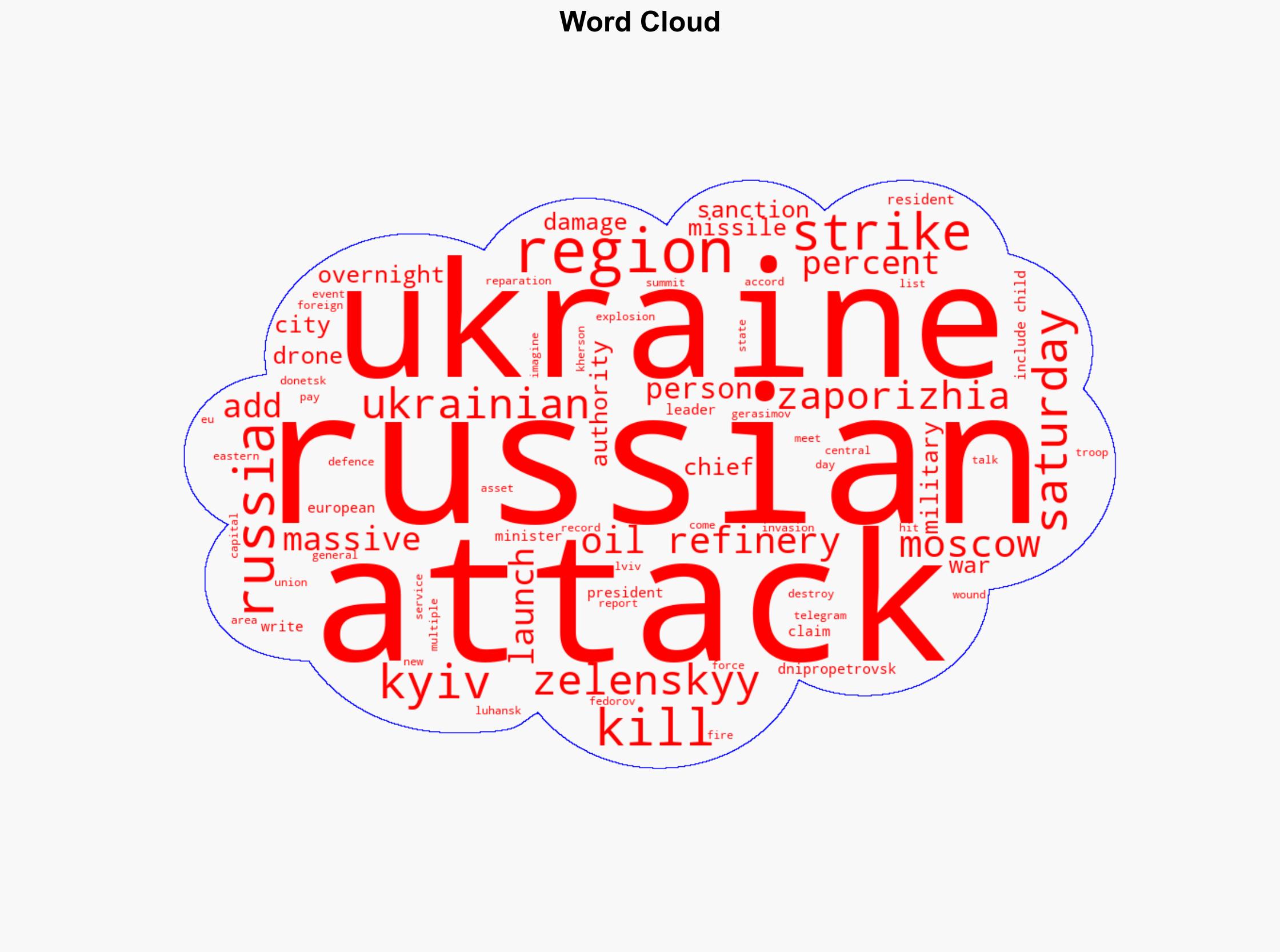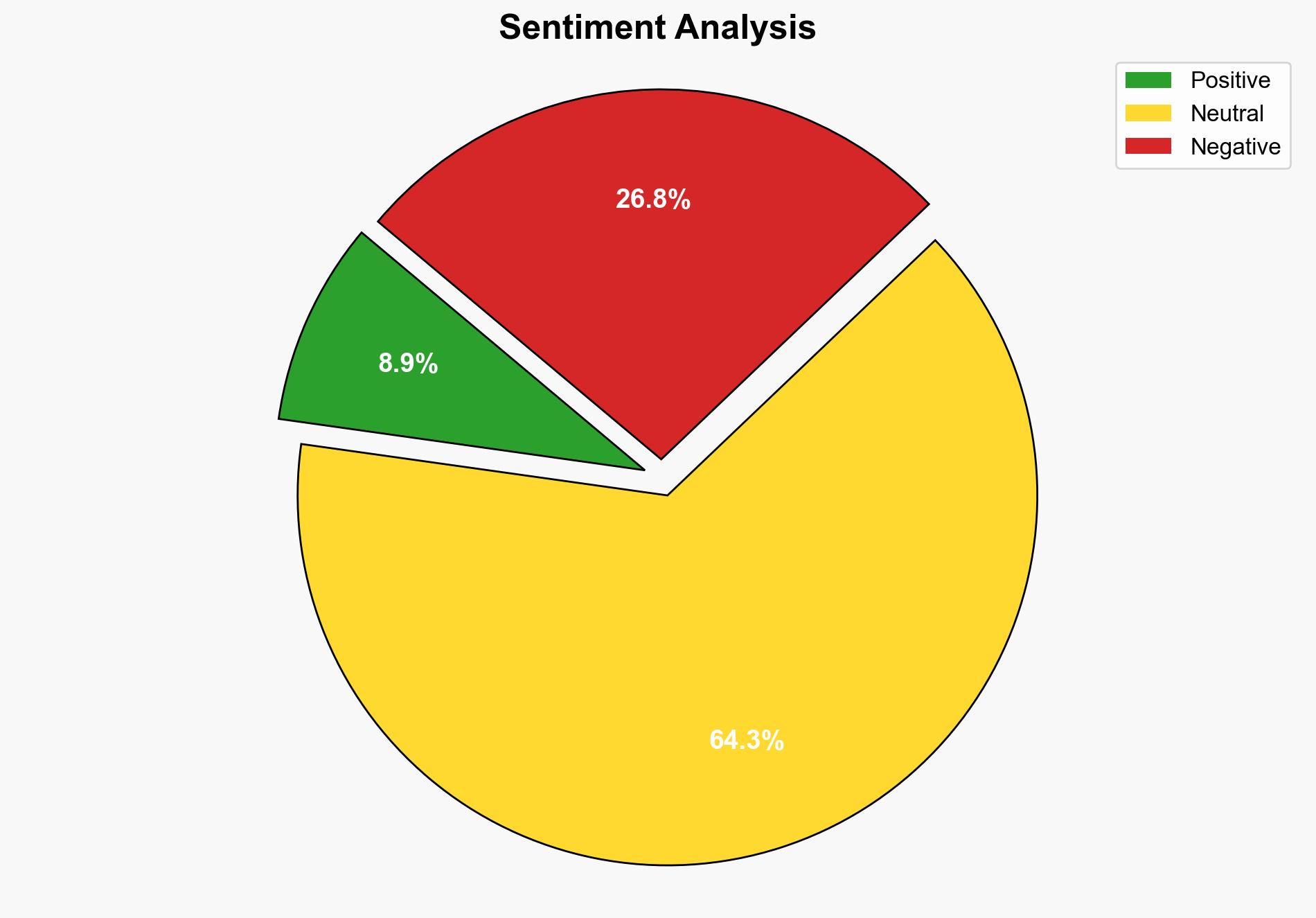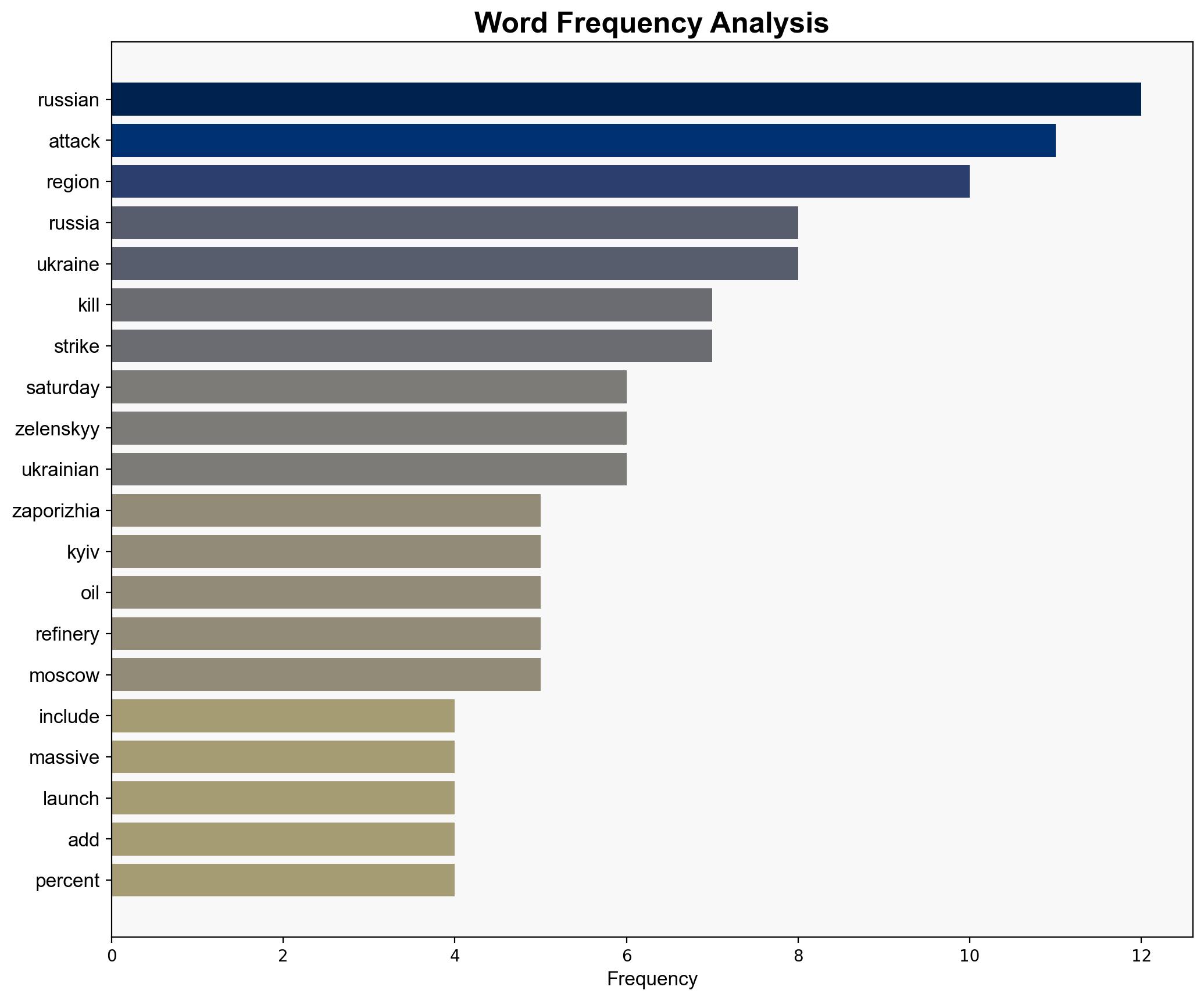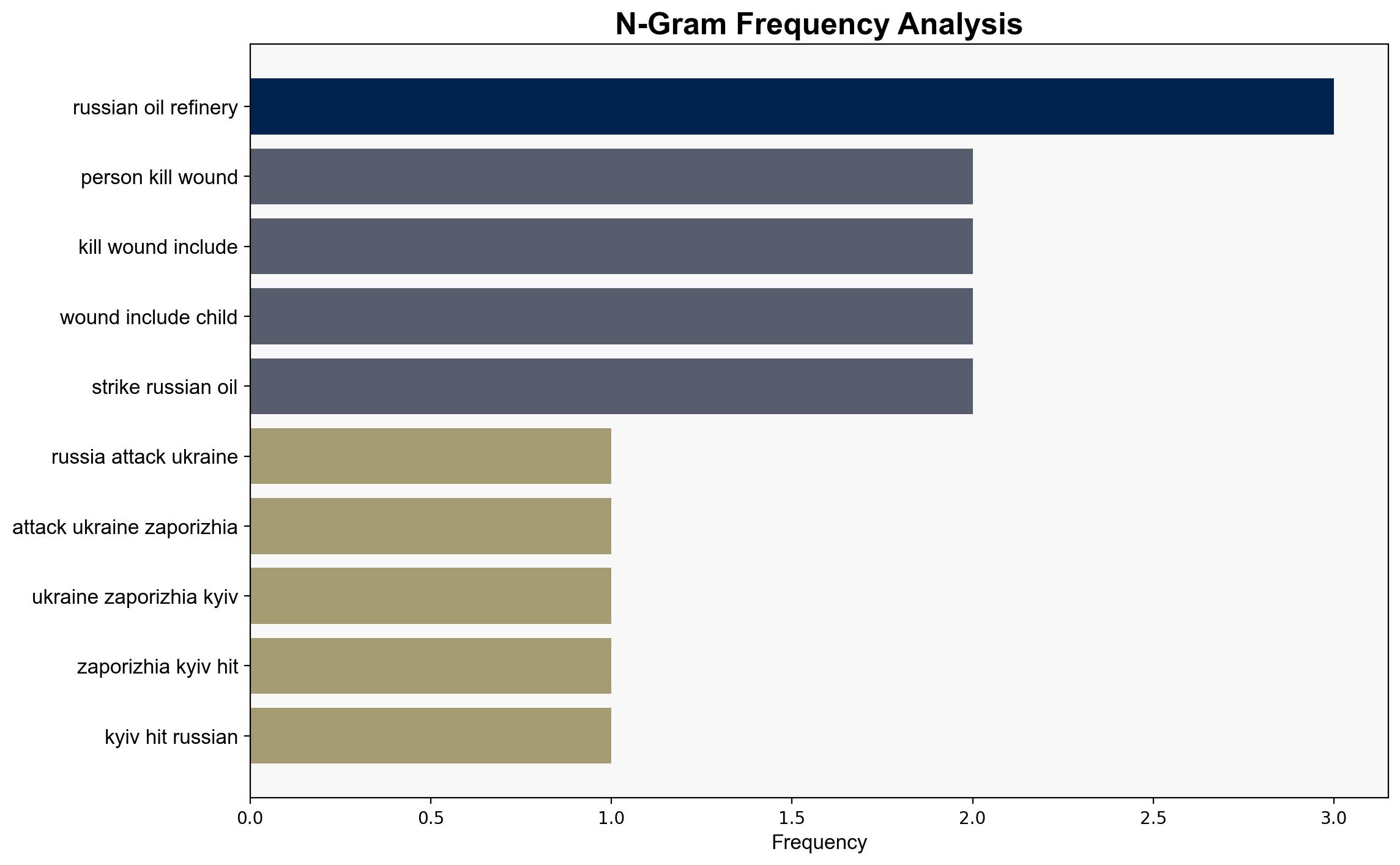Russia attacks Ukraines Zaporizhia Kyiv hits Russian oil refineries – Al Jazeera English
Published on: 2025-08-30
Intelligence Report: Russia attacks Ukraines Zaporizhia Kyiv hits Russian oil refineries – Al Jazeera English
1. BLUF (Bottom Line Up Front)
The ongoing conflict between Russia and Ukraine has escalated with significant attacks on both sides, targeting strategic infrastructure. The most supported hypothesis is that these actions are part of a broader strategy by Russia to destabilize Ukraine and consolidate territorial gains, while Ukraine seeks to disrupt Russian logistics and apply international pressure. Confidence Level: Moderate. Recommended action includes reinforcing diplomatic efforts to de-escalate tensions and preparing for potential economic and military repercussions.
2. Competing Hypotheses
1. **Hypothesis A**: Russia’s attacks on Zaporizhia and other regions are intended to weaken Ukraine’s military capabilities and civilian morale, facilitating further territorial advances.
2. **Hypothesis B**: The attacks are retaliatory measures in response to Ukraine’s strikes on Russian oil refineries, aimed at disrupting Russian supply lines and economic stability.
Using ACH 2.0, Hypothesis A is better supported due to the strategic significance of Zaporizhia and its proximity to contested regions, aligning with Russia’s historical military objectives. Hypothesis B, while plausible, lacks sufficient evidence of a direct causal link between Ukrainian strikes and Russian responses.
3. Key Assumptions and Red Flags
– Assumption: Russia’s primary objective is territorial expansion rather than purely retaliatory actions.
– Red Flag: Limited independent verification of the full extent and impact of the attacks.
– Potential Bias: Over-reliance on official statements from involved parties, which may be propagandistic.
– Missing Data: Detailed casualty reports and independent assessments of infrastructure damage.
4. Implications and Strategic Risks
– **Economic**: Disruption of oil supplies could impact global markets, increasing energy prices.
– **Geopolitical**: Escalation may draw in additional international actors, complicating diplomatic resolutions.
– **Military**: Potential for further military escalation, including increased use of drones and missiles.
– **Psychological**: Heightened civilian fear and potential for increased refugee flows.
5. Recommendations and Outlook
- Enhance diplomatic channels to mediate and de-escalate tensions, involving neutral parties if necessary.
- Prepare contingency plans for potential economic disruptions, particularly in energy markets.
- Monitor military movements closely to anticipate further escalations.
- Scenario Projections:
- Best Case: Successful diplomatic intervention leads to a ceasefire and renewed negotiations.
- Worst Case: Full-scale military escalation draws in additional countries, leading to broader conflict.
- Most Likely: Continued tit-for-tat strikes with intermittent diplomatic efforts.
6. Key Individuals and Entities
– Ivan Fedorov: Regional military administration chief in Ukraine.
– Valery Gerasimov: Chief of Russia’s General Staff.
– Volodymyr Zelenskyy: President of Ukraine.
– Kaja Kallas: European Union foreign policy chief.
7. Thematic Tags
national security threats, cybersecurity, counter-terrorism, regional focus





